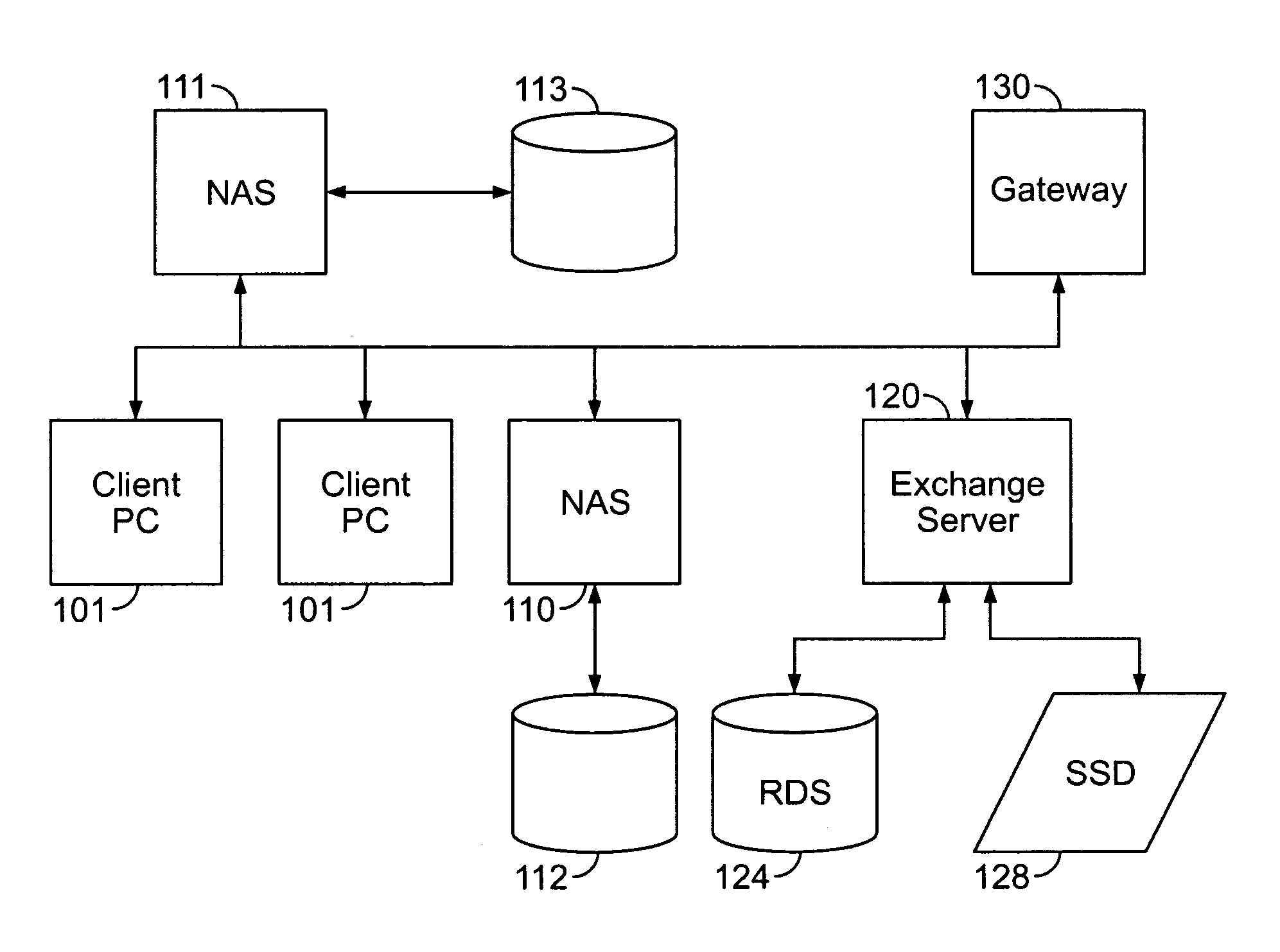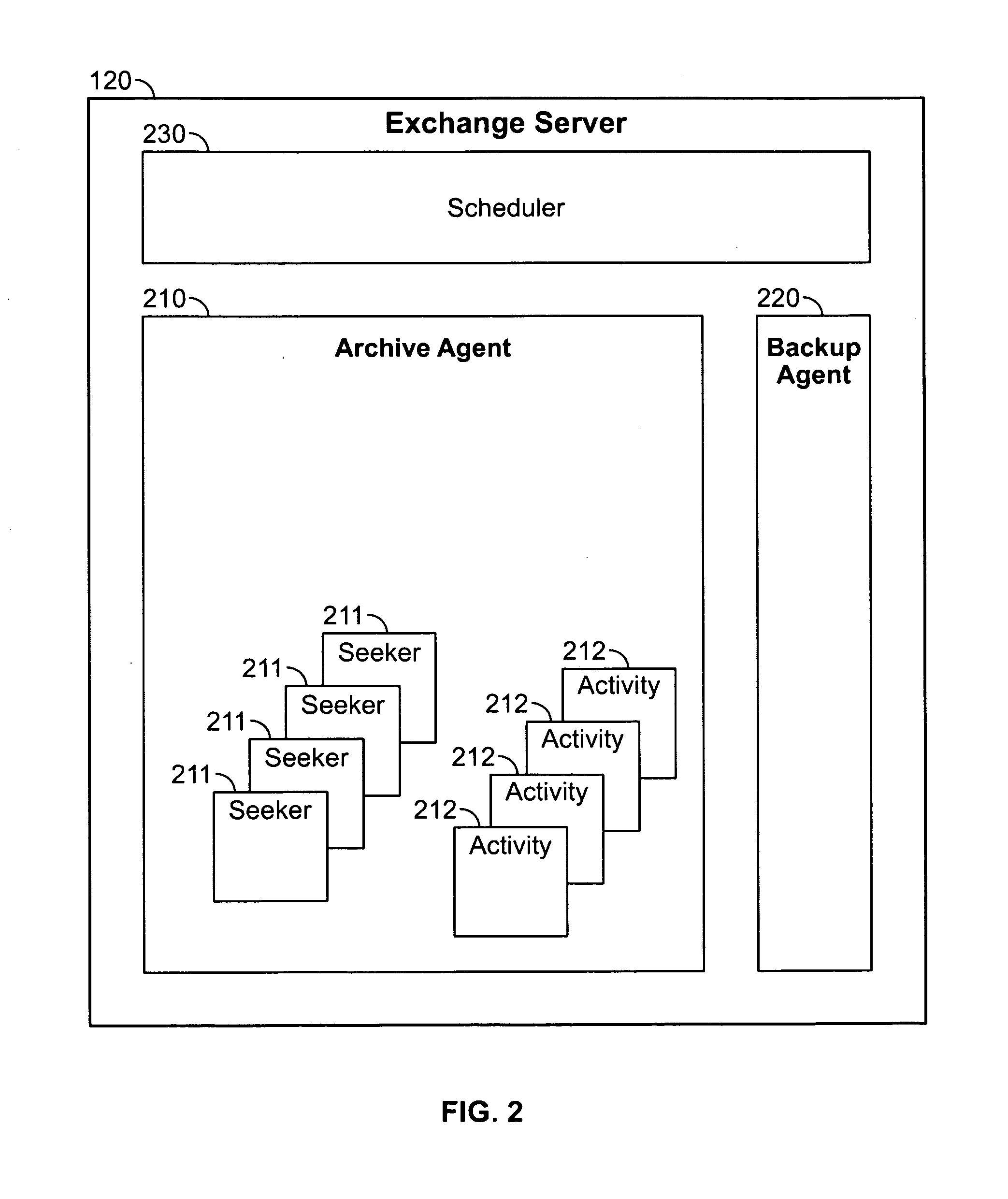However such databases can become very large and beyond the economic capacity of
solid state stores.
However, problems and limitations have tended to impose an upper limit as to the number of uses that can be effectively deployed on a
single server (computer) or
server group (of computers).
Such problems and limitations include issues related to availability and
recovery, and hence,
usability.
In practice, the usefulness of exchange messaging systems can be greatly limited in that certain failures of an Exchange
Server (i.e. a
server computer supporting an exchange type
database) may cause all of the many users of that particular Exchange
Server to lose ready access to their messages.
In such a situation, they may be unable to conveniently send or receive any email until the relevant Exchange
Server has fully recovered from the failure.
Since the underlying exchange storage mechanism uses at least one complex and large
database,
full recovery has typically required a complete and non-corrupted restoration of an entire
database.
However, since such recovery may involve the application of sequential
logfile data records to pseudo-random (mailbox determined) “locations” in the database, recovery time may become great.
Moreover, speed of recovery may be limited by the random-access performance of the deployed database storage devices (such as the commonplace SSD memories).
Many storage devices for databases are not at all optimized for
random access methods.
This may lead to very large, and continually growing, databases.
Such large, previously developed, exchange databases may be associated with a number of problems, some of which are described below.
In regards to recovery time: Large databases may be laborious to recover after a failure occurs, and recovery may become protracted.
Use of large databases may result in an increased probability of recovery
process failure prior to completion, thus introducing cascaded recovery issues and extended outage periods.
Such events may have an adverse
impact upon business activity dependent upon availability of email service.
Such high-performance devices may tend to be associated with higher costs.
Fast storage devices may be needed both to ensure timely on-line responses to user requests and for supporting acceptably short recovery times. Whenever databases are permitted to grow very large, the cost of the database storage tends to become substantial and performance issues may arise.
However, concurrent backup processes may interfere with timely responses to user requests and may act to reduce application performance especially in the case that an Exchange database is stored on rotating mechanical disk drive(s).
As a result, database logfiles may grow large and this may result in extended recovery times and increased risks such as of failure during a recovery itself.
Loss or failure of backup media may prevent or hinder recovery of a secured exchange database.
Large databases, long recovery times and complex procedures each exacerbate risk of database damage such as due to
human error during an actual
recovery procedure.
Whenever such a policy is imposed, reaching a mailbox size limit may cause consequences for a user that may be annoying or harmful.
Such ad hoc archiving of copies of email messages may create management problems, and elevated costs and risks for the organization providing exchange services.
For example, quotas may tend to lower
user satisfaction as to the service provided, and user productivity may be reduced as a consequence of adding a burden (archiving and management tasks) to the
workload of those users.
Moreover, quotas may sometimes be only marginally effective at reducing database size.
Moreover, insufficient managed e-mail archives may increase legal risks and associated discovery costs.
In legal proceedings, discovery processes may routinely compel a costly search through all existing e-mail archives.
Uncontrolled e-mail archiving thus leads to huge legal searches that encompass not only Exchange Server databases and backup tapes but also, potentially, all the PCs in an entire enterprise.
In some cases these legal searches have cost more than a million dollars.
The inefficiencies of such an approach are readily apparent—since message stores can be extremely large, backup times can be protracted and require
large capacity storage media such as mag. tape.
The protracted time can easily become inconvenient and the probability of recording
device failure may be substantially proportionate to data size.
Moreover the consequential delays due to a recording failure may also be roughly proportionate to data size.
Similarly, on the recovery side, huge full backups may lead to long recovery times and increased probability of, and consequences of, failure.
Furthermore, the user of
large capacity mag. tapes may require administrator intervention which may become, in turn, inconvenience and error prone.
Thus, either procedural errors or media defects may cause a recovery process to manifest failure, either while data is being reinstated or when the recovery process subsequently runs a consistency check against the recovered database.
In previously developed solutions there may be no email service while this operation is in progress and users may be deprived of normal email service for an extended period.
Where
Random Access Method is applied to RDS a great deal of physical read / write head movement is usually involved with consequential temporal inefficiency and overall low performance resulting.
Consequently, the database storage disks may be a limited factor preventing rapid recovery of an interrupted exchange service.
Random write performance of magnetic disk RDS may be limited to as few as 100 transactions per second and recovery times may be protracted.
 Login to View More
Login to View More  Login to View More
Login to View More 


